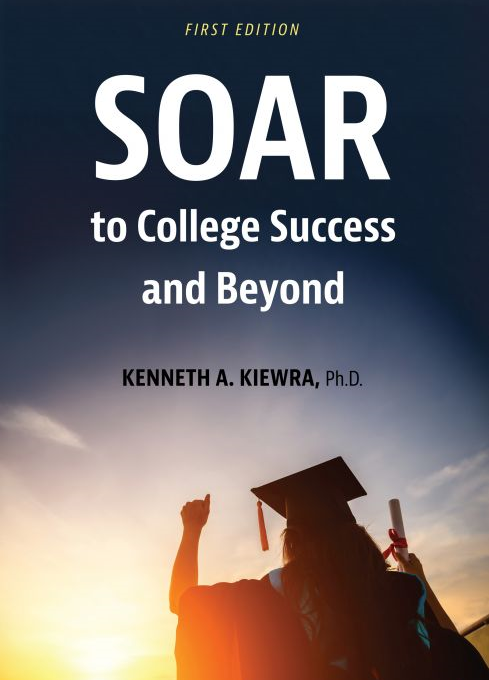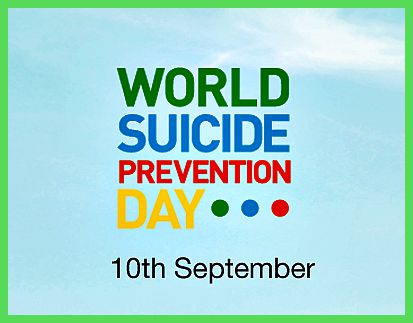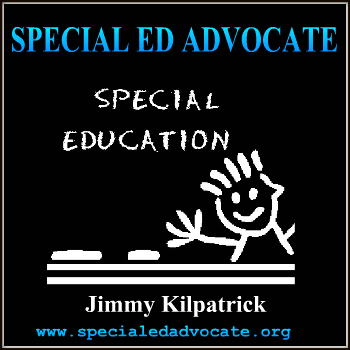An Interview with Dr. Kenneth Kiewra: Author of SOAR to College Success and Beyond
Michael F. Shaughnessy
Brief Biography:
Dr. Kenneth Kiewra is a professor of educational psychology at the University of Nebraska-Lincoln. He earned his Ph.D. in educational psychology from Florida State University and was also on the faculty at Kansas State University and Utah State University. Professor Kiewra’s research pertains to learning and to talent development. On the learning side, he has investigated note taking, graphic organizers, and the SOAR teaching and learning method he developed. On the talent side, he has investigated highly productive educational researchers and parents’ roles in talent development. Dr. Kiewra has authored five books, including: Teaching How to Learn: The Teachers Guide to Student Success, Nurturing Children’s Talents: A Guide for Parents, and his most recent book and the topic of this interview, SOAR to Academic Success and Beyond, published by Cognella. Dr. Kiewra is the former editor of Educational Psychology Review, is listedamong the Top 2% of the Most-Cited Researchers Worldwide, and is a frequent public speaker, having made more than 500 invited presentations to education, corporate, and parent groups. In 2021, Dr. Kiewra received his university’s system’s top award for outstanding teaching and instructional creativity.
- Dr. Kiewra, congratulation on publishing SOAR to College Success and Beyond. Who is this book for and why is it needed?
Most college students use ineffective strategies. When they should be recording complete lesson notes in class, they are instead recording just one-third of important lesson ideas. When they should be organizing information graphically so that relationships are apparent with just a glance, they are instead organizing information linearly in lists or outlines that obscure relationships. When they should be associating new ideas to one another and to prior knowledge, they are instead learning in a piecemeal fashion, one idea at a time. And, when they should be assessing their learning through self-testing, they are instead using redundant and ineffective strategies such as rereading, rewriting, and reciting…ridiculous.
It’s no surprise that college students use weak learning strategies, because educators have not typically taught students how to learn. Schools focus on the products of learning—teaching students content from archeology to zoology, but not the processes of learning—teaching students how to learn any and all content.
Fortunately, it’s never too late to learn how to learn. And, that is the purpose of SOAR to College Success and Beyond: Providing students with the skills needed to succeed in college and beyond college in the real world. The book is therefore intended for any student, from high school to graduate school, seeking to become a top-flight learner. It is especially intended for the academic success courses taught at most colleges and universities, like the Strategies for Academic Success class I developed at the University of Nebraska that enrolls 600 students annually.
- Your text revolves around the SOAR method. What exactly is the SOAR method?
SOAR is a teaching and learning method I developed, based on information-processing theory, and validated to improve the teaching-learning process. As mentioned previously, students commonly employ ineffective strategies. SOAR is the antidote for nursing ineffective strategies into effective ones and the prescription for achieving success in school and beyond. SOAR is an acronym for the method’s four components: select, organize, associate, and regulate. Effective students select important lesson information, organize it using graphic organizers, associate new ideas with one another and with prior knowledge, and regulate learning and performance readiness.
SOAR components were derived to boost the memory processes inherent in information-processing theory. SOAR’s select component aids selective attention. SOAR’s organize and associate components aid encoding and long-term information storage. And, SOAR’s regulate component aids retrieval and aids the metacognitive processes guiding information processing.
Colleagues and I have validated SOAR methods. An array of experiments confirms that SOAR methods are superior to students’ preferred methods or to SQ3R methods when students are provided SOAR material, are prompted to create SOAR material, or are trained for 30 minutes in SOAR methods and create their own SOAR material. SOAR advantages are evident for fact, relationship, and concept learning, with SOAR versus non-SOAR differences as high as 48%. Additionally, SOAR aids essay writing performance. Those using SOAR methods write more organized and more integrative essays than those using preferred writing methods.
Figure 1 shows a brief and simple SOAR example. As the instructor presents a lesson on spiders and insects, students select and note all important ideas. Following the lesson, students organize notes graphically by creating the spiders and insects matrix. Next, students examine the matrix and create associations between noted ideas (e.g., both have hard outer shells) and between noted ideas and prior knowledge (e.g., a spider is like a table where each corner has two legs). Last, students regulate learning by generating and answering practice test questions.
- As a researcher, you are probably best well known for your work on note taking. How is your note-taking research present in SOAR and in the text?
I began studying note taking as a graduate student at Florida State University in 1980 and still investigate note taking today. The first SOAR component, select, depends on recording a complete and effective set of notes. Without such notes, the other SOAR components—organize, associate, and regulate—cannot be carried out. My note-taking research has determined how instructors and students can bolster note taking by investigating note-taking issues like the following: note taking versus listening, the consequences of missing lectures, note completeness and achievement, reviewing one’s own notes versus the instructor’s notes, note-taking frameworks, copy-and-paste note taking, note-taking cues, laptop versus longhand note taking, digital distractions, note revision, lesson repetition, text note taking, and note review methods.
In one representative study conducted by Titsworth and Kiewra (2004), college students listened to a lecture on communication theories. There were two lecture versions—one with organizational cues inserted throughout and one without cues. The organizational cues signaled students to the lecture topic (e.g., general systems theory) and the lecture category (e.g., application). Here is a sample cue: “Next, we examine an application of general systems theory.” Students hearing the cued lecture recoded about 40% more notes and achieved about 45% higher than those hearing the un-cued lecture. In another representative study (Luo et al., 2018), college students viewed a PowerPoint lesson about educational measurement that contained 23 slides with text and images. Half recorded notes using a laptop and half recoded longhand notes using pen and paper. Following note review, students were tested. Longhand note takers achieved more than laptop note takers on both text-based and image-based tests. Longhand note takers’ superior test performance was likely due to their superior notes. Longhand notes were more efficient, more paraphrased (reflective of more meaningful processing), and contained more images than did laptop notes.
“Selection Strategies for Noting Lecture and Text Information” is the Chapter 2 title in SOAR to College Success and Beyond. The chapter draws on my note-taking research and explains why note taking is important, provides strategies for boosting note taking before, during, and after the lecture, and offers note-taking strategies for text learning.
- Many college students lack organizational skills. How has SOAR, your research, and your text addressed organization?
Students left to their own devices do not seek to better organize their linear, list-like notes even though research confirms that graphically organized notes are superior. Graphic notes allow students to quickly see relationships obscured by linear notes. For example, look how apparent relationships are in the Figure 2 matrix notes on planets. With just a glance, these relationships are apparent: (1) As distance from the sun increases, revolution time increases and orbit speed decreases. (2) Inner planets relative to outer planets are smaller, rockier, and have fewer moons and longer rotation times. The first relationship encompasses 24 discrete facts; the second one encompasses 32 discreet facts. A planets outline would not readily reveal these relationships.
Organization is the cornerstone of the SOAR method. When students understand a lesson’s organization, the selection and noting of lesson ideas are facilitated, as was the case in the organizational cue study mentioned earlier. And, once information is well organized, identifying associations is simplified, as was the case in the planet example above. Finally, a graphic organizer is useful for generating and answering regulation questions. Looking at Figure 2, it is easy to generate fact question like, “What is the diameter of Venus?” or “How many moons does Uranus have?” and to generate relationship questions like, “Which planet is the largest?” or “What is the relationship between planets’ revolution time and orbit speed?”
Nelson DuBois and I developed a simple and easily usable representation system based on information storage theories posited by psychologists. Our system includes hierarchies based on networks, sequences based on scripts, matrices based on schema, and illustrations based on duel-coding. Each of these graphic organizers represents and reveals a unique type of relationship: Hierarchies for superordinate-subordinate relationships, sequences for order relationships, matrices for comparative relationships, and sequences for positional relationships. Most of my graphic organizer research has investigated the matrix, which is derived by extending hierarchies and sequences, and has yielded findings linked to best practices for creating and studying matrices.
Chapter 4 in SOAR to College Success and Beyond pertains to SOAR’s organize component. It helps readers develop an organizational mindset in all learning contexts, explains why graphic organizers are effective, and describes and exemplifies how to construct effective hierarchies, sequences, matrices, and illustrations across domains. Graphic organizers are also used as an aid throughout the text to help readers organize and associate information.
- I was glad to see a chapter on association strategies, because I believe they are often overlooked by students as a powerful tactic they can use. Can you discuss this a bit?
So true. Students often learn in a piecemeal fashion, one idea at a time, and fail to learn important relationships. They isolate single facts such as, “Venus has a rocky surface,” and then mindlessly repeat that single fact over and over trying to cram it into long-term memory. Instead, they should create memorable associations. For instance, (a) all inner planets, including Venus, have rocky surfaces, and all outer planets have slushy surfaces, (b) Venus is next to and much like Earth, and we all know that Earth has a rocky surface, and (c) imagine Venus, the god of love, throwing a rock at her jilted lover.
Chapter 5 on association in SOAR to College Success and Beyond begins by convincing students as to the power of association. How else could someone remember 100-400 consecutive digits presented to them orally, one per second, in a digit span task? Associating digits to one another, to letters, to words, and to places are association tactics anyone can learn and employ with practice, as evidenced by memory champions who accelerate from having middle-of-the-road memories to fast-lane memories in short order. Chapter 5 instructs students in how to build internal associations among lesson ideas, external associations between lesson ideas and prior knowledge, and in raising and answering association questions such as, “Hierarchically speaking, what information is above, below, and alongside this concept?” and “What do I already know about this?” The chapter also focuses on the power of generating new examples and the use of mnemonic techniques from keyword to Mnemonomies.
- Time and life management are two other issues you address in the text. What time and life guidance does the text offer?
The text argues that the principles for managing time are akin to those for investing money. And, why not? Time is money. Students are advised and shown how to (a) invest time, (b) invest in time, (c) invest early, (d) invest daily, (e) invest wisely, (f) monitor their investment, and (g) enjoy their investment. They are also advised and shown how to create block, semester, and weekly planners, all of which are created in matrix form.
As for life management, I remember when I was a teaching assistant in graduate school and a fellow TA said, “I feel like I just need to take some of these college students home with me and teach them how to live.” So true. Rather than take them home, though, in the text I offer up advice from those who really understand how to manage their lives: The talented and highly productive, whom I have studied the past 20 years. Among those studied are Olympic gold medal athletes, chess grandmasters, world champion baton twirlers, National Spelling Bee champions, National Geographic photographers, National Merit Scholars, world-class musicians, and many others including 20 of the worlds’ most productive psychologists—scholars like Richard Mayer, Patricia Alexander, Barry Zimmerman, Richard Anderson, Michael Pressley, Alexander Renkl, Carol Dweck, Jacquelynne Eccles, and Ming-Te Wang, to name a few. Based on their talent stories, the text offers and describes these guiding life success principles: (a) take the leap, (b) follow your bliss, (c) stay focused, (d) hone your knowledge and skills, (e) get into a routine, (f) collaborate, and (g) frame failure.
- Reading is obviously a big part of the college experience, perhaps now more than ever in this internet world. How can your text improve college reading skills?
In my view, it does not much matter whether information is presented visually through images, auditorily through spoken words, or visually through written text. Regardless of medium, important information must be selected, organized, associated, and regulated for optimal learning. Thus, SOAR is a powerful learning tool whether instruction is lecture-based or text-based, in-person or online.
Still, lectures and texts are different animals. Lectures are fleeting like a frightened rabbit. Texts are stationary like a pet dog in a sunbeam. Lectures are demanding. They demand you be in a certain place, at a certain time, and select vital information as the lecture speeds past. Texts are flexible. You can read them anywhere, anytime, and at your own pace.
When students read texts, most are not strategic. They read casually as if scanning the Sunday paper. When they are strategic, their strategies of choice are rereading or highlighting the text. Rereading is a repetitive strategy unlikely to boost comprehension the second or third times through. Highlighting, meanwhile, is often a mindless activity that leaves the text looking like it was spray-painted yellow. Highlighting does not equal understanding.
SOAR to College Success and Beyond advocates that students mark their text using a simple system I developed that easily distinguishes the text’s topics with boxes, categories with circles, and associated details with underlining. Students are also advised to record notes on paper, as they would for lecture, or in text margins as they read. Either way, recorded notes should aid in information organization, association, and regulation.
- Helping skills like metacognition and mindset need to be mentioned. What does your text advocate with regard to these two areas?
I recall Joel Levin, former editor of Journal of Educational Psychology, saying that successful learning depends on two cogs: cognition and metacognition. Students need to understand and enact cognitive principles like selective attention and encoding that govern learning. And, they need to understand and enact metacognitive principles like self-monitoring and self-assessment that drive those cognitions. SOAR to Academic Success and Beyond addresses both cogs. SOAR’s select, organize, and associate components boost cognition. SOAR’s regulation component boosts metacognition. The regulation component directs students to monitor and assess their own learning and performance readiness. The regulation chapter prepares students to regulate learning as they select, organize, and associate information. It prepares them to regulate performance readiness by anticipating, constructing, and answering practice test questions that tap a variety of learning outcomes such as fact, relationship, concept, and skill. The regulation chapter also prepares students to regulate during testing, following testing (error analysis), and in a variety of real-world situations.
One of the keys to success is a growth mindset, the belief that success is made, not born. It’s an important belief because it leads one to set learning rather than performance goals, expend great effort, be strategic, persist when facing obstacles, and embrace critical feedback. Plus, it’s an accurate belief. Successful students, talented performers, and creative artists and scientists all share a growth mindset. Carol Dweck’s growth mindset notion is evident in SOAR to College Success and Beyond’s opening chapter where students are introduced to myriad success stories that convince them that their eventual success lies in their own outstretched palms. Growth mindset is revisited in the Mighty M’s chapter on mindset and motivation. There, students are led to transform defeatist fixed mindsets into opportunistic growth mindsets.
- Writing skills are perennially weak. How does SOAR and your text address writing?
The text meets the writing-is-weak problem head on in a chapter titled, “SOAR for Reading, Writing, Arithmetic, and Beyond.” Many students falsely believe that writing is like speaking. They simply shoot from the lip and fill the page with whatever thoughts and utterances emerge. Just as students are rarely taught how to learn, they are rarely taught how to write. I recall in the text that my first real writing lessons occurred as a graduate student. My advisor had me read my papers to him out load. “What, I have an advisor who can’t read,” I thought. But, during these sessions, he was a writing problem-detecting and repairing machine. He’d say things like: “This sentence lacks parallel structure. Instead of saying, ‘Short-term memory is limited in capacity and has a short duration,’ you should say, ‘Short-term memory is limited in capacity and duration.’ Use the active voice here. Instead of saying, ‘The proposals were read by several reviewers,” write, ‘Several reviewers read the proposals’…..”
Just as SOAR is an effective antidote for poor learning strategies, it is also an effective antidote for poor writing strategies. A series of studies by Linlin Luo and I confirmed that college students either provided with SOAR materials or trained in how to create their own SOAR materials wrote better essays than those without SOAR materials, better in terms of idea organization and idea integration.
- Anything else you’d like to add about SOAR to College Success and Beyond?
As you can surmise from this interview, the text information and student application recommendations are science-based, drawn from psychological theories and from empirical research studies, many from my own work on note taking, graphic organizers, SOAR, and talent development. Some study skills texts are not so science-based, instead offering anecdotal and unsubstantiated study advice like, “just record unfamiliar ideas in notes, convert your notes to outlines, and study by rehearsing information again and again.” Other study skills books almost shun strategy instruction all together, instead focusing on student adjustment to college. Adjustment is important, but such instruction can only transform a not-so-well-adjusted student with a 2.0 GPA into a well-adjusted student with a 2.0 GPA. Students need skills in addition to a happy disposition.
Finally, I hope that readers find the text written in a way that boosts learning and interest. For one, it is chalk full of instructive, inspirational, and memorable stories like that of the full-time financial analyst who still found time to run 100+ miles a week and who set the world record by running across America in 46 days, that’s more than 72 miles per day! If he can do that, what can’t you do? Or, the fictional story of Isabelle who was the epitome of bad lecture learning and time-management practices but who made a remarkable SOAR-based recovery in the book’s epilogue. The text is also replete with practice-what-you-preach SOAR-based text aids that guide and boost learning, aids such as objectives, focus questions, focus question answers, graphic organizers, and practice activities. It is never too late to learn how to learn, and SOAR to College Success and Beyond is intent on helping students do just that.
Selected References
SOAR:
- Kiewra, K. A. (2022). SOAR to college success and beyond (First Edition). San Diego, CA: Cognella.
- Kiewra, K. A. (2009). Teaching how to learn: The teacher’s guide to student success. Thousand Oaks, CA: Corwin Press.
- Luo, L. & Kiewra, K. A. (2022). Applying SOAR strategies to curb digital distractions while note taking and studying. In A. Flanigan and J. Kim (eds.), Digital distractions in the college classroom. IGI Global.
- Daher, T., & Kiewra, K. A. (2016). An investigation of SOAR study strategies for learning from multiple online resources. Contemporary Educational Psychology, 46, 10-21.
- Kiewra, K., Luo, L., Colliot, T., & Lu, J. (2021). Learning strategies that help students SOAR to success. In L. Zhang (ed.), Oxford Research Encyclopedia of Education. Oxford University Press, Vol 2, 670-700.
Note Taking:
- Kiewra, K. A., Colliot, T., & Lu, J. (2018). Note this: How to improve student note taking. The IDEA Center, IDEA Paper #73, http://www.theideacenter.org/.
- Kiewra, K. A. (2019). 7 tips on how to take better notes. The Conversation.
- Luo, L., Kiewra, K. A., Flanigan, A., & Peteranetz, M. (2018). Laptop versus longhand note taking: Effects on lecture notes and achievement. Instructional Science, 46, 947-971.
- Luo, L., Kiewra, K. A., & Samuelson, L. (2016). Revising lecture notes: How revision, pauses, and partners affect note taking and achievement. Instructional Science, 44, 45-67.
- Titsworth, S., & Kiewra, K. A. (2004). Spoken organizational lecture cues and student notetaking. Contemporary Educational Psychology, 29, 447-461.
Graphic Organizers:
- Colliot, T., Kiewra, K. A., Luo, L., Flanigan, A., Lu, J., Kennedy, C., & Black, S. (2021). The effects of graphic organizer completeness and note-taking medium on computer-based learning. Education and Information Technologies.
- Kiewra, K. A. (2012). Using graphic organizers to improve teaching and learning. The IDEA Center, http://www.theideacenter.org/.
- Jairam, D., Kiewra, K. A., Kauffman, D. F., & Zhao, R. (2012). How to study a matrix. Contemporary Educational Psychology, 37, 128-135.
- Kauffman, D. F., & Kiewra, K. A. (2010). What makes a matrix so effective: An empirical test of the relative benefits of signaling, extraction, and localization. Journal of Instructional Science, 38, 679-705.
- Robinson, D., & Kiewra, K. A. (1995). Visual argument: Graphic organizers are superior to outlines in improving learning from text. Journal of Educational Psychology, 87, 455 467.
Talent Development:
- Kiewra, K. A. (2019). Nurturing children’s talents: A guide for parents. Santa Barbara, CA: Praeger
- Kiewra, K. A., Luo, L., & Flanigan, A. (2021). Educational psychology early career award winners: How did they do it? Educational Psychology Review, 33, 1981-2018.
- Luo, L., & Kiewra, K. A. (2021). Parents’ roles in talent development. Gifted Education International, 37, 30-40.
- Kiewra, K. A., & Rom, B. (2020). A glimpse inside the lives of the academically talented: What Merit Scholars and their parents reveal. High Ability Studies, 31, 245-264.
- Kiewra, K. A., & Witte, A. (2018). Prodigies of the prairie: The talent development stories of four elite Nebraska youth performers. Roeper Review, 40, 176-190.














